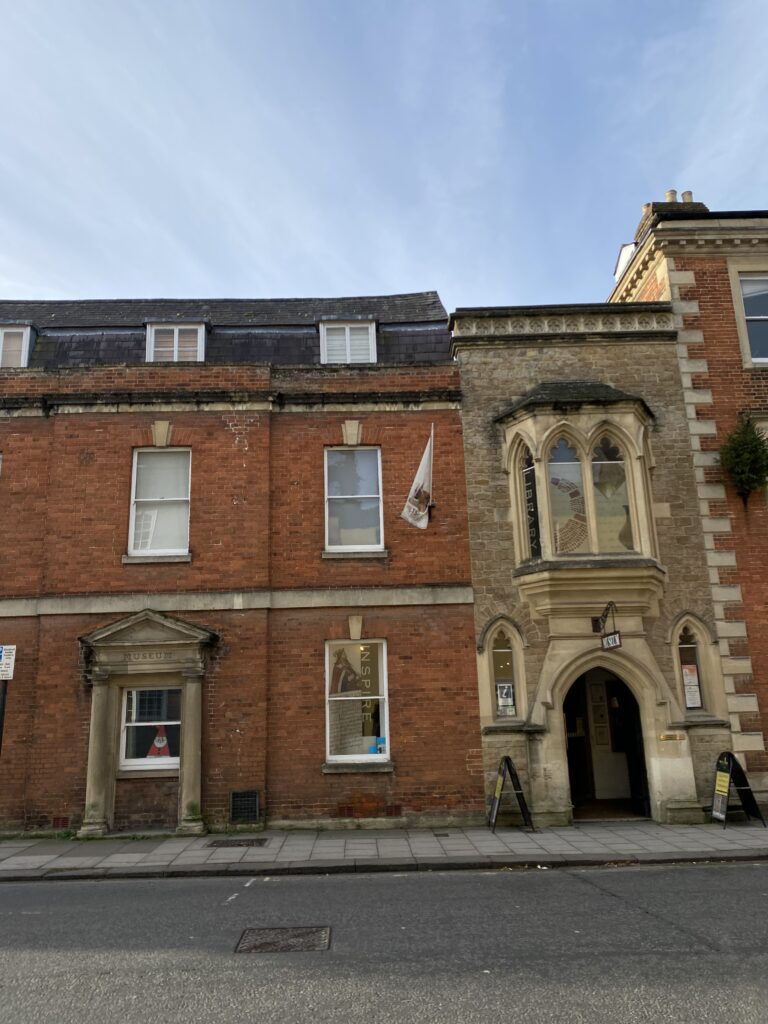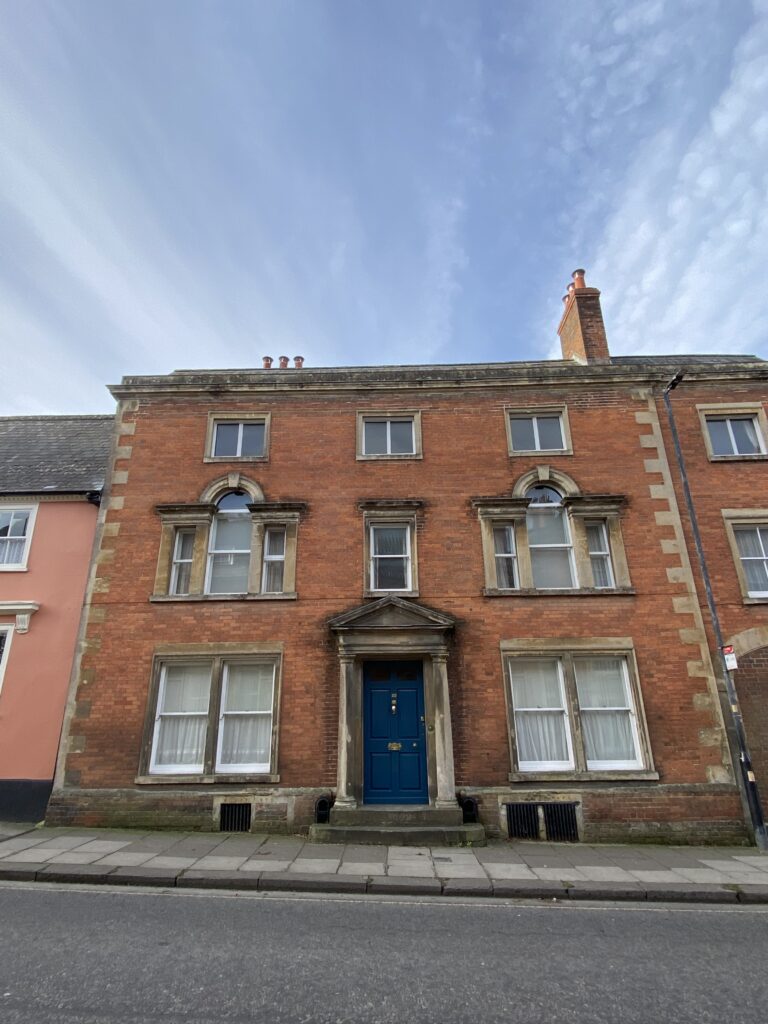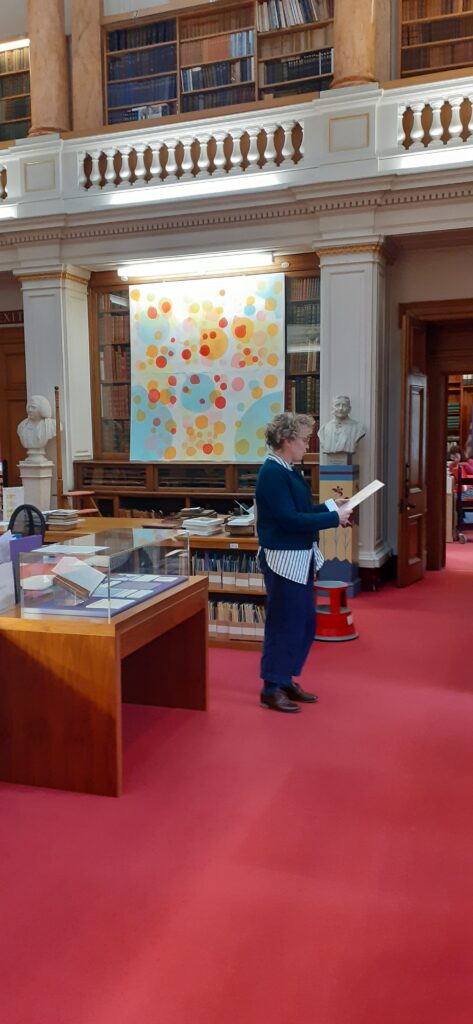In this blog post, Maddie Watson, a finalist Modern History and Politics student at the University of Southampton, introduces their work on Maud Cunnington as part of their Beyond Notability Internship, run by Southampton Digital Humanities. In this part, Maddie discusses their encounter with Maud via linked data and their exploration of her work as an archaeologist.
The second part of the blog can be read here.
I discovered Maud Cunnington on my first day working on the Beyond Notability Project in November 2023. She left an indelible mark on Wiltshire with excavations dating back to 1897, conducted alongside her husband, Ben Cunnington. Maud was used as an example when teaching me to create linked data, and I recognised that she lived in Devizes (my hometown). My interest was immediately piqued due to my curiosity about local history, as well as the evidence of her extensive work in archaeology. Before engaging with this internship, my academic background did not encompass any direct engagement with archaeological studies. Therefore, I was surprised by the extent of women’s participation in the field, exemplified by the data the Beyond Notability project have assembled about Maud, particularly given the considerable gendered barriers to achieving such involvement.

As I delved deeper into the project and entered more data, I discovered places that Maud had excavated, lived, or worked at, that I also recognised. For example, her involvement with the Wiltshire Archaeological and Natural History Society (WANHS) connected her to the Wiltshire Museum, where I spent much time as a child and now volunteer. To enrich the narratives of women active in archaeology, the Wiltshire Museum displays many artefacts unearthed by Maud, alongside her writing desk and information regarding her excavations.
Over the Christmas holiday, as I embarked on the journey to explore sites associated with Maud, I found myself traversing familiar paths of my childhood and teenage years. The places that were once a backdrop to my adventures gained a new significance, layered with her historical presence. Walking through these sites, I couldn’t help but feel a connection to both the past and present. The playgrounds of my youth now shared space with the echoes of an accomplished archaeologist who had left her mark on the ground I once explored with boundless curiosity. It encouraged me to reflect on Maud’s legacy, as well as how our experiences as women undoubtedly differed despite similarities in our academic disciplines.
As an intern, the journey of adding various women to the Beyond Notability database has been an enlightening process allowing me to compare the contributions of women in the archaeological field. Sharon Howard’s visualisations of Beyond Notability project data have greatly assisted with understanding general trends in categories of contribution, such as correspondence, excavations, and work. From this, I have been able to interpret how women’s contributions interlink. For example, Maud’s excavations between 1908 and 1930 were atypical, as according to the data we have assembled few women who partook in such activity during this period. However, for the same date range, the correspondence category suggests that women more commonly contributed to the field by reporting to and communicating with various archaeological committees.
Themes of gender, social standing, and personal tragedy unfolded as I examined Maud’s contribution to archaeology through the lens of three pivotal excavations: Oliver’s Camp (1907), All Canning’s Cross (1911), and Woodhenge (1926). Maud’s educated, middle-class background and marriage into an equally sheltered line of Wiltshire antiquarians made archaeology an accessible vocation in comparison to women of a lower socio-economic background. Particularly, her residence at 33 Long Street, Devizes, with its distinctive Georgian architectural features and central location, served as a tangible testament to her high social standing.

Historian Julia Roberts quotes Maud’s nephew, Colonel R.H. Cunnington, to exemplify prevailing attitudes towards female participation in the field in the 19th and 20th centuries:
‘… a man ought to know any language or science he learns thoroughly: while a woman ought to know the same language and science only so far as may enable her to sympathise in her husband’s pleasure’ (Roberts, 2002, 47).
The prevailing perspective suggested that female participation in disciplines such as archaeology primarily held significance to humour her husband’s interests. Such limiting views fail to explain Maud’s unbounded enthusiasm for the discipline and highlight the lack of expectation for women to cultivate a personal interest in archaeology, as well as diminishing the recognition of their achievements. Maud became a member of WANHS in 1907, despite the members lists revealing very few women were involved alongside her. On the Beyond Notability database, only six other women are recorded as connected to WANHS at a similar time to Maud, and only three women are in the database as members of the society (though these numbers are skewed by archival research that has focuses on national bodies). The Beyond Notability project has unearthed a long-standing presence of women in the field who worked alongside their husbands. However, evidence of independent publishing suggests that these women were active participants contributing to the advancement of archaeological knowledge. Particularly, Maud’s publications underscored the fallacy of women’s involvement in the discipline to appease their husband’s interests.
Roberts contends that Maud’s accomplishments are overshadowed by her polarising personality, given that it countered traditional feminine values centred around domesticity and subservience. I find this to be an outdated argument, as Maud and the other women noted on the the Beyond Notability Wikibase are evidence of women of all classes engaging in roles outside of the home, therefore subverting the dominant ‘angel of the house’ narrative. Maud’s work faced continual dismissal by new male archaeologists, such as Alexander Keiller and Stuart Piggott, who found her difficult to work with due to differences in methods of record-taking and excavation.
Keiller began his involvement in archaeological work in 1922, while Piggott initiated his in 1927 on leaving school, a period spanning 25-30 years after Maud’s involvement commencing in 1897. Their dismissal of Maud is representative of a generational shift, though undoubtedly, these difficulties were exacerbated by Maud’s seemingly somewhat cantankerous personality. Overall, women had been active in archaeology for many years before Keiller and Piggott joined the scene in the 1920s, though it should not be discounted that attitudes towards women in the field were characterised by tolerance rather than genuine acceptance.
The second part of the Maddie’s blog on Maud Cunnington can be read here.
List of works consulted:
Historic England (1972) 33 and 33A, Long Street. Available at: https://historicengland.org.uk/listing/the-list/list-entry/1263549?section=official-list-entry (Accessed: 6 February 2024).
Howard, S. (2023) ‘PPAs and change over time’, BN notes, 12 December. Available at: https://sharonhoward.org/bn/bn_notes/posts/ppa-2023-12-08/ (Accessed: 1 February 2024).
Moshenska, G. (2016) ‘Maud Cunnington’, Trowelblazers, 16 April. Available at: https://trowelblazers.com/2016/04/14/maud-cunnington/ (Accessed: 16 January 2024).
Roberts, J. (2002) ‘That terrible woman’: the life, work and legacy of Maud Cunnington’, The Wiltshire Archaeological and Natural History Magazine, 95, pp. 46-62.
Smith, B. (2000) The Gender of History: Men, Women, and Historical Practice. Harvard: Harvard University Press.
Taylor, H. (n.d.) Six Groundbreaking Female Archaeologists. Available at: https://www.english-heritage.org.uk/learn/histories/women-in-history/six-groundbreaking-female-archaeologists/ (Accessed: 16 January 2024).

